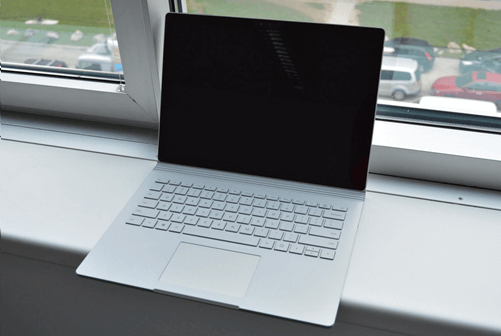A Comprehensive Guide to Fixing "PC Not Starting Correctly"
Delve into the realm of troubleshooting PC startup issues and overcome the challenges of a non-starting computer. From understanding user scenarios to exploring potential risks and offering actionable fixes, this passage provides invaluable insights into resolving PC startup errors.
Picture this: You're eagerly powering up your computer, ready to dive into your tasks or leisure activities, only to be met with frustration as your PC fails to start correctly. Whether greeted by error messages or a blank screen, the inability to start your PC can disrupt your workflow and cause unnecessary stress.
Let's unravel the mysteries behind PC startup issues and empower you with solutions to overcome them.
Why do users want to start the PC?
The reasons are diverse and essential.
From work commitments and communication to entertainment and accessing vital resources, a functional PC is indispensable in today's digital age. Without the ability to start your PC reliably, you risk losing productivity and connectivity with the digital world.
The potential risks of non-starting PCs are significant and multifaceted.
Beyond the inconvenience of interrupted tasks and lost productivity, repeated attempts to restart the computer can strain hardware components and exacerbate existing issues. Moreover, unresolved startup problems may indicate underlying system instability, posing a threat to data integrity and system reliability.
How to fix pc not start correctly?
Listed below are several feasible fixes to address "fix pc not starting correctly," each backed by background insights and detailed instructions:
1. Perform a System Restore:
Background:
System Restore is a feature in Windows that allows users to revert their system to a previous working state, effectively undoing recent changes that may have caused startup issues.
System Restore creates restore points at regular intervals or before significant system changes, providing users with a safety net to roll back to a stable configuration.
Steps to Fix PC Not Starting Correctly:
- Boot your computer into Safe Mode by pressing F8 during startup.
- Select "Repair Your Computer" and access System Restore.
- Choose a restore point predating the issue and follow the prompts to initiate the restoration process.
- Restart your computer after the restoration is completed.
2. Check Hardware Connections:
Background:
Hardware connections play a crucial role in the proper functioning of a computer. Loose or improperly connected hardware components can prevent the PC from starting correctly.
Checking and reseating hardware connections ensures that components such as RAM modules, CPU, and power connectors are securely seated, minimizing the risk of startup issues.
Steps to Fix PC Not Starting Correctly:
- Power off your PC and disconnect external devices.
- Open the computer case and inspect internal components for loose connections or damage.
- Reseat hardware components, ensuring they are firmly seated in their respective slots.
- Reconnect external devices one by one and attempt to start the PC.
3. Run Startup Repair:
Background:
Startup Repair is a built-in Windows diagnostic tool designed to automatically detect and fix common startup issues.
When the PC fails to start correctly, Startup Repair analyzes system files, configuration settings, and boot parameters to identify and resolve issues that may be preventing normal startup.
Steps to Fix PC Not Starting Correctly:
- Boot your PC using a Windows installation media or recovery drive.
- Select "Repair Your Computer" and navigate to Startup Repair.
- Follow the prompts to allow Windows to diagnose and repair startup issues.
- Restart your PC after the repair process concludes.
About MyRecover:
In cases of data loss resulting from startup issues, consider leveraging MyRecover, a powerful data recovery tool.
MyRecover is an advanced data recovery tool designed to retrieve lost or deleted files from a variety of storage devices, including hard drives, SSDs, USB drives, and memory cards. With its intuitive interface and powerful features, MyRecover simplifies the recovery process, making it accessible to users of all skill levels.
Key features of MyRecover include:
Deep Scan Technology: MyRecover employs advanced algorithms to perform a comprehensive scan of storage devices, maximizing the chances of recovering lost files, even in the most challenging scenarios.
Selective Recovery Options: Users can specify file types or directories for recovery, enabling targeted retrieval of essential data while excluding unnecessary files.
Preview Functionality: Before initiating the recovery process, users can preview recoverable files to verify their integrity and relevance, ensuring successful data restoration.
User-Friendly Interface: MyRecover features an intuitive interface that guides users through the recovery process, making it easy to navigate and use effectively.
To recover missing files on Windows after starting normally, follow these steps using MyRecover:
Download and install MyRecover on your Windows system.
Launch the software and select the drive or storage device containing the missing files.
Initiate a deep scan to comprehensively search for missing files.
Preview recoverable files and select those for restoration.
Click "Recover" to initiate recovery and retrieve missing files.
In conclusion
Troubleshooting "fix PC not starting correctly" issues requires a systematic approach and the right tools. By understanding the underlying causes and implementing targeted fixes, users can restore their PC's functionality and resume normal operations with confidence.
FAQs:
1. What are the common causes of a PC not starting correctly?
Common causes include corrupted system files, hardware issues, software conflicts, and abrupt shutdowns.
2. How can I boot my PC into Safe Mode?
Press F8 repeatedly during startup to access the Advanced Boot Options menu, then select Safe Mode.
3. What should I do if Startup Repair fails to fix the issue?
Explore alternative fixes such as System Restore, hardware diagnostics, or seeking assistance from a professional technician.
4. Can data recovery tools retrieve files lost due to startup issues?
Yes, data recovery tools like MyRecover can retrieve files lost due to startup issues by scanning storage devices for recoverable data.
5. How can I prevent PC startup issues in the future?
Regularly update your operating system and drivers, perform hardware maintenance, and avoid sudden power outages to minimize the risk of startup issues.



